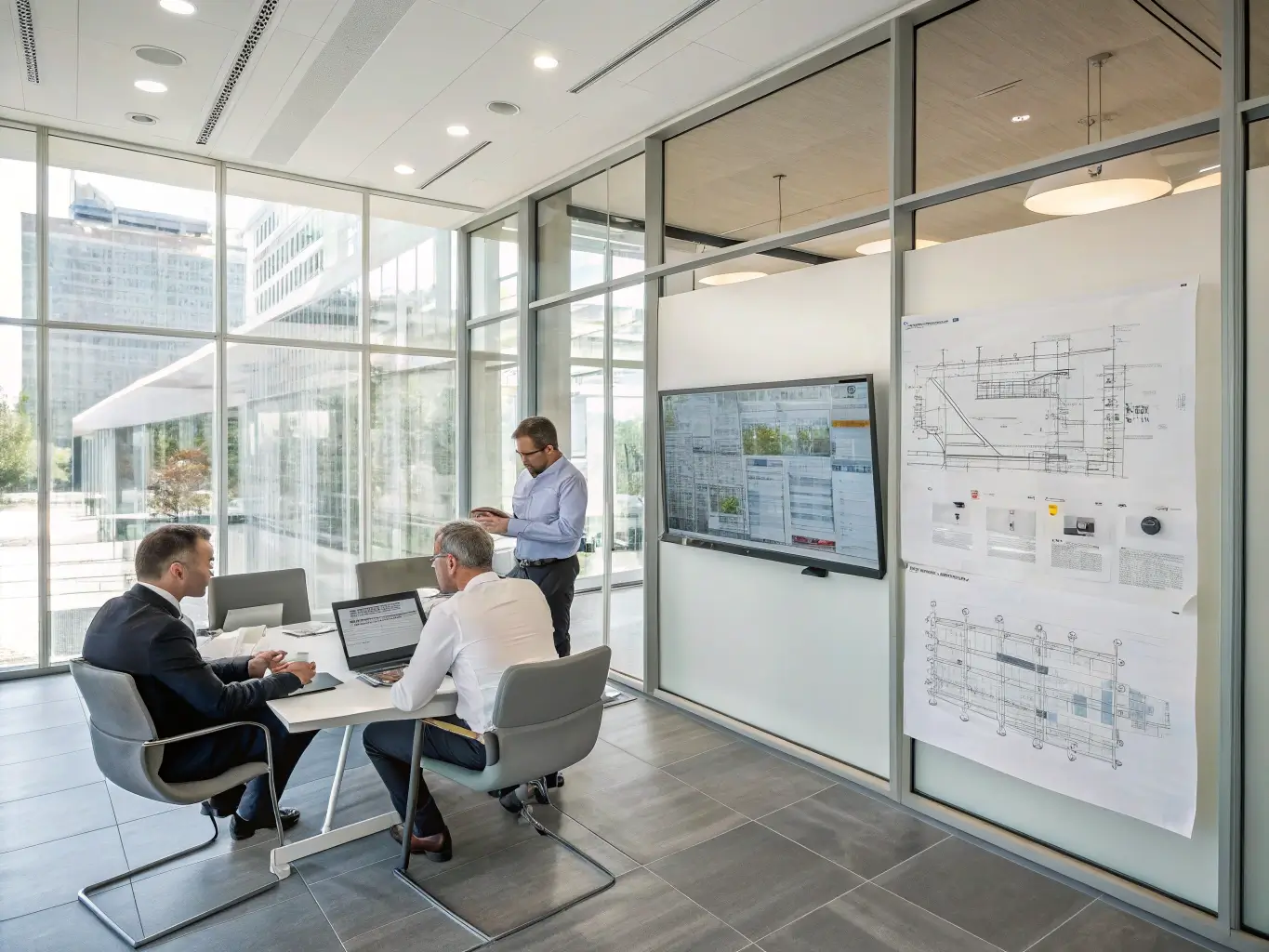Full-Service Bookkeeping for Architecture & Engineering Firms isn’t just about balance sheets or tax season preparation—it’s about making smarter, faster, and more confident business decisions every single week.
If you’ve ever asked:
- Why don’t I know how profitable each of my projects actually is?
- Why is cash flow always a problem, even during busy months?
- Why is managing payroll, invoicing, and budgets so chaotic?
You’re not alone. I’ve worked with dozens of architecture and engineering firms that felt the same way. The problem isn’t your projects. It’s the financial systems behind them.
So let’s break down what full-service bookkeeping looks like for a firm like yours—and why doing it right changes everything.

Why A&E Firms Can’t Use Cookie-Cutter Bookkeeping
Here’s the deal: Architecture and engineering firms run on projects, not products.
You’re not selling widgets. You’re selling time, technical expertise, and precision.
That means your bookkeeping has to be fundamentally different from a retail store or even a general contractor.
Project-Based Accounting: Your GPS for Profitability
Every hour needs to be tracked by project, phase, and sometimes even task type.
This isn’t just nice to have—it’s critical if you want to know whether a job is profitable before it’s too late.
What it means in practice:
- Time tracking by individual project and role
- Expense tagging to specific clients or jobs
- Retainers and milestone billing tracked against scope
When I first worked with a midsized structural engineering firm in Denver, they were invoicing monthly but had zero clue which projects were bleeding cash.
After setting up job-costing correctly in their software and connecting it to staff timesheets, we uncovered three active projects that had already gone 40% over resource estimates—in the first quarter.
Fixing those leaks added $180,000 back to their bottom line the same year.
Compliance Isn’t Optional—Especially When You Work with Government Clients
Many A&E firms take on federal or public infrastructure work. That introduces a new level of bookkeeping complexity thanks to FAR (Federal Acquisition Regulation) compliance.
This includes:
- Documenting allowables and unallowables by FAR definitions
- Supporting overhead rate audits from government agencies
- Preparing annual indirect cost reports that align with DCAA requirements
Not prepping for this can force your invoices into payment limbo for months.
Build Compliance into Your DNA:
- Set up cost pools early (direct labor, indirect expenses, G&A, etc.)
- Keep a consistent audit trail of timekeeping and costs
- Tag fringe benefits and overhead separately in your books
If you’re relying on a generalist bookkeeper who doesn’t know what a “multiplier” is—it’s time to change course.
Custom Reporting = Tactical Decision Power
Want to know how profitable that K-12 campus project was compared to the public library remodel?
You won’t find answers like that in a generic P&L.
You need custom dashboards that tell you:
- Project-by-project gross margin
- Billable vs. non-billable time logged by team
- Resource utilization across departments
I always tell firm owners: If your reports don’t answer specific, painful questions—you’re not using your financials as a weapon. You’re using them as decoration.
Quick Recap:
Generic bookkeeping keeps you legal.
Industry-specific bookkeeping makes you profitable.
Let’s move into the heartbeat of your operation—daily financials.
The Core Moves: Bookkeeping That Actually Runs Your Business
Many firms treat bookkeeping like a checkbox: something to hand off so they can get back to AutoCAD and site visits.
But when books are handled right, they become your best operational tool.
Here’s what needs to happen every week to make that true:
1. Clean AR and AP = Smoother Cash Flow
Firms that don’t collect invoices in 30–45 days bleed cash. Ones that don’t control outgoing vendor payments? Bleed faster.
Set up a clean rhythm:
- Weekly AR reviews. What’s over 15 days and needs escalation?
- Batch payments once a week. Predictable outflow is easier to budget.
- Use payment platforms that sync to QuickBooks or Ajera automatically (no more Dropbox folders of receipts)
2. Payroll That Covers Everyone—Properly
Architecture and engineering firms have a mix of salaried team members, interns, part-timers, and 1099 consultants.
Screwing up payroll here affects morale fast.
What I recommend:
- Run payroll and contractor payments from the same platform if possible (Gusto or ADP integrate well)
- Automate benefits deductions, PTO tracking, and tax filings—manual tracking = disaster waiting to happen
- Timecard compliance isn’t negotiable, especially if you’re subject to FAR or wage-hour audits
3. The Monthly Close You Can’t Afford to Skip
You can’t steer the ship if your dashboard is frozen on last quarter.
That’s why I push every client to implement a monthly close loop:
- Bank and credit account reconciliations
- Income statement and balance sheet review
- Job-costing summaries with actual vs. budget
Here’s my framework:
- Close books by the 10th of the following month
- Use a checklist reviewed by at least two team members or an outside advisor
- Turn those numbers into a one-page summary that firm leaders actually read
Running your firm without a monthly close is like trying to fly a plane without a working altimeter.
Set it, automate it, and protect it.
QuickBooks vs Ajera: Your Tech Stack Determines Your Clarity
Most design firms start on QuickBooks—and for good reason. It’s flexible, affordable, and familiar.
But many hit roadblocks as they scale projects and complexity.
So how do you make it work smarter?
Making QuickBooks Work for A&E Firms
I’ve customized QuickBooks setups for over 40 design firms. Here’s what makes the difference:
- Start with a project-based chart of accounts. Revenue grouped by vertical (residential, healthcare, civic), costs tagged by labor, subs, and reimbursables.
- Use classes or locations for department-level tracking (architecture, MEP, interiors)
- Job-costing settings must be enabled with time and expense tracking toggled on
Then comes automation:
- Create reusable invoice templates for milestone billing (not just T&M)
- Connect time tracking systems like TSheets or Harvest to push entries into QuickBooks daily
- Set up rules for expense categorization that link to your job cost codes
If your current reports don’t show gross profit by project—you’re underusing QuickBooks.
What About Ajera?
Ajera was built specifically for firms like yours.
It’s not just a bookkeeping system—it’s a project control platform.
Why firms grow into Ajera:
- Real-time project backlog, WIP, and billing data in one place
- Labor utilization stats that help you forecast hiring or downsizing
- Built-in compliance features for FAR, multipliers, and audit prep
Transitioning from QuickBooks to Ajera is like upgrading from a rental car to a custom-built 4x4.
You don’t need it until your scale demands it, but when that time comes, you’ll wish you’d switched sooner.
I’ve handled multiple Ajera migrations. Key tips:
- Clean your data first (don’t import garbage)
- Map all your old job codes to new project templates
- Train your PMs on the new reporting tools or they’ll default back to Excel
QuickBooks is great for early-stage clarity.
Ajera gives you performance control when you have multiple active jobs, multidisciplinary teams, and need real-time oversight.
Summary? Your software should match your stage.
Coming up next, we’re diving into how financial advisory services go beyond bookkeeping—and the real levers that drive profitability, growth, and scalable success for every A&E firm…
Explore More
Your Numbers Mean Nothing If You Don’t Leverage Them
Here’s something I tell every A&E firm after we’ve cleaned up their books and optimized their tech:
Clean data is just fuel. Without interpretation, it's just sitting in the tank.
That’s where strategic financial advisory services step in—and where most firms truly start to level up.
Think of this as your unfair advantage.

Profitability Isn’t a Guess—It’s Engineered
You shouldn’t have to wait until tax season to find out whether your firm was profitable.
That’s reactionary accounting. You need proactive modeling.
Start here:
- Build project pricing models based on fully loaded cost—not just hourly rates. Include indirect costs, admin burden, fringe.
- Reassess your multipliers. If you're still charging 2.8 and your overhead's jumped 20%, you're quietly bleeding.
- Flag scope creep early. Set burn-rate alerts so PMs are warned when budgets approach 80% utilization.
I worked with a boutique architecture firm in Boston that was completing beautiful commercial office designs—but losing money on every third project.
Why?
Fixed fees calculated two years earlier didn’t reflect escalating wage costs.
After implementing real-time labor reporting and benchmarking against past projects using Ajera reports, they recalculated target fees and added a 5% contingency buffer for change orders.
Result: average project margin improved by 14% over the next 6 months.
Takeaway: Gut feel doesn’t scale. Profitable pricing does.
Efficiency Is a Process, Not a One-Time Fix
We’ve all seen too many spreadsheets. And we’ve all wondered why things still feel chaotic even with decent software.
Usually, it comes down to two things:
- Redundant workflows (e.g., entering time in three separate places)
- Staff working hard—but not working “smart”
Here’s how we tighten that up:
- Map out every financial touchpoint—from proposal to final invoice
- Identify double-data entry moments (these are automation opportunities)
- Rethink staff roles: are PMs bogged down in admin? Are accountants reviewing hours?
Your processes need to evolve as your firm grows.
An engineering firm I worked with in Seattle moved from QuickBooks + spreadsheets to a full stack in Ajera, cleaned up roles, and reduced weekly admin time firm-wide by 22 hours.
That’s half a headcount saved—every week.
Key Insight: Want more capacity? Fix broken systems before hiring more people.

Growth Planning That Matches Your Market Reality
I’ll be blunt: most architecture and engineering firms don’t fail because of a bad project.
They fail because they outgrow their finances.
Expansion eats cash.
That’s why we always layer in financial scenario planning before any major growth move:
- Planning to open a second office? Run a 12-month capital reserve analysis.
- Taking on public work? Forecast longer receivable cycles into your cash flow.
- Hiring more senior talent? Run expense vs. backlog simulations to check ROI runway.
Don’t leap and hope. Model, decide, leap.
Alignment > Inspiration.
Cash Flow Problems Aren’t Just Poor Luck—They’re Preventable
If I had a dollar for every A&E principal who told me, “We’re busy, but cash is tight,” I’d buy a beach house.
Here’s the reality:
There’s no glory in revenue you can’t collect.
Get in front of the problem:
- Forecast cash flow weekly—not monthly. Build in timing of milestone billing and payment terms delays.
- Align payment schedules to key deliverables. Stray from T&M if it’s slowing collections.
- Implement progressive billing with auto-reminders and integrated ACH payment links
Your billing system should work for your PMs, not against them.
Also: get smart with working capital.
- Prioritize vendors with favorable net terms
- Consolidate purchases to negotiate better rates
- Use credit cards surgically—not recklessly—to smooth out cycles
When COVID hit, I had a 30-person civil engineering firm with $420K in AR—but only $40K in the bank.
Overnight, we restructured billing cadence, pushed AR collection systems, and added a $150K working capital LOC.
They made it through—and were profitable within 6 months.
Takeaway: Cash flow isn’t luck. It’s a system.
Partners, Not Vendors: How You Win Long-Term
The best firms I work with don’t see finance as a task.
They treat it like a relationship.
That starts during onboarding:
- Systems audit: What’s slowing your flow?
- Team handoff: Who owns what—from timesheets to reporting?
- Tailored setup: Your firm isn’t average. Neither is your finance plan.
Then we stay in the loop:
- Monthly strategy calls
- Quarterly forecast and goal reviews
- Annual look-aheads covering hiring, software, real estate, and growth
We don’t just answer questions. We help you ask better ones.
Is this a cost center—or your next profit center?
We build a system that scales with you.
You Design the Future—We’ll Engineer the Financial Foundation
At the end of the day, I don’t want you to worry about your books.
I want you to walk into client meetings confident your team is profitable, your pipeline is enough, and your cash flow won’t kill your momentum.
Because full-service bookkeeping for architecture and engineering firms isn’t about keeping score.
It’s about building strategy into your systems so you can grow with clarity.
If that sounds like something your firm needs—it’s time to stop winging it and start winning it.
Everything changes when your financial foundation matches your design vision.
Let’s get there—together.
And that’s the payoff of full-service bookkeeping for architecture and engineering firms.
Explore related solutions:
- Deltek Ajera Support & Consulting
- Advisory and CFO Consulting for A&E Firms
- Software Support Services
For broader industry insights, see:
Let's Talk: Schedule a
Consultation Today!



